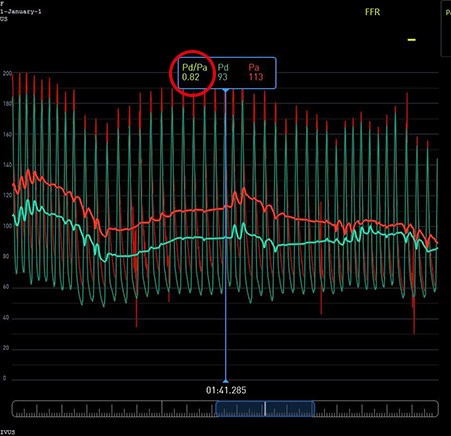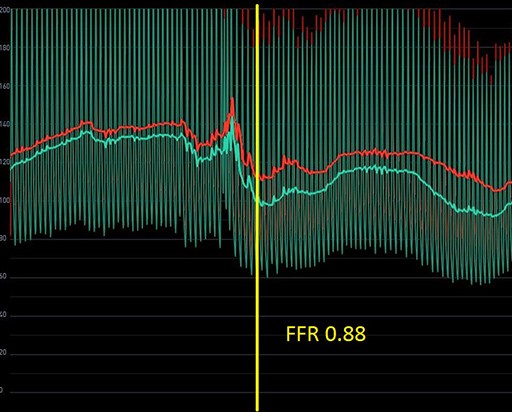A new, workhorse like FFR Pressure Guidewire to simplify treatment strategy in a tortuous multivessel disease case
In this case, Dr. Jonathan Hill from Kings College Hospital in London, UK uses the new COMET™ FFR pressure guidewire to assess tortuous multivessel disease and optimize treatment strategy.
Key Learnings
This case highlights:
- The need for a highly steerable FFR wire in highly tortuous vessels
- Multiple reconnections are required for complex anatomy and multi vessel disease
- Concomitant use of imaging on multimodality platform to help guide and optimize treatment strategy
Patient History
- Female in 60s
- NSTEMI with raised troponin
- Ongoing pain
- Highly tortuous anatomy, may be difficult to assess invasively
Case Challenges
- Tortuosity: FFR wire may be difficult to deliver
- Multiple vessels: PCI will require multiple FFR reconnections
- Long lesion: Imaging may also be required
Techniques Used
- NSTEMI intervention with the Synergy Stent in the LAD
- Bystander vessel disease assessment via physiological and anatomical guidance with COMET™ FFR & OptiCross IVUS catheters on the integrated Polaris platform.
- 3 vessel disease FFR performed
COMET™ FFR Pressure Guidewire Characteristics
- Workhorse wire capability with near 1:1 torque
- Reproducible and reliable reconnection
- Seamless integration with imaging if required
NSTEMI Intervention
- SYNERGYTM stents to proximal LAD
- Decision taken to assess 3 vessels with physiological guidance
Proceed to FFR guided PCI of 3 bystander vessels: LAD, Cx & RCA

FFR of Cx
- COMET™ FFR wire delivers through highly tortuous vessel
- FFR of 0.88 (not pictured)
- Patient asymptomatic & ischemic territory is small
- No stents placed
IVUS Guided RCA Assessment
- IVUS reveals MLA of 3.2mm2
- COMET™ wire re-connected
- FFR of 0.88, PCI not necessary of RCA

Key learnings
This case highlights:
- The need for a highly steerable FFR wire in highly tortuous vessels
- Multiple reconnections are required for complex anatomy and multi vessel disease
- Concomitant use of imaging on multimodality platform to help guide and optimize treatment strategy
Join Our Complex PCI Community
Education & Training
Educare offers a comprehensive suite of education and training programs for Complex PCI.
Learn More



























